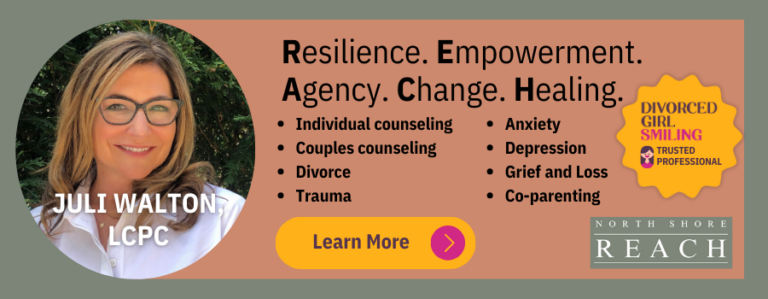Wondering how to let go of anger in divorce? Anger is a common and often intense emotional response during and after divorce. It can serve as a psychological defense, shielding individuals from feelings of vulnerability, fear, and loss. However, when anger becomes chronic or pervasive, it can shift from a protective response to a toxic state that hinders adjustment, compromises health, and prevents emotional healing.
The Physiological Impact of Chronic Anger
Prolonged anger activates the body’s stress response system. Elevated cortisol and adrenaline levels contribute to a range of physical health risks, including:
- Cardiovascular strain: Increased blood pressure and heart rate raise the risk of hypertension, heart disease, and stroke.
- Metabolic disruption: Elevated cortisol levels can contribute to weight gain, sleep disturbances, and immune suppression.
- Musculoskeletal tension: Persistent anger often manifests as chronic muscle tightness, headaches, and reduced daily functioning.
In short, anger is not only an emotion—it is a somatic state that, when sustained, places significant strain on the body.
The Psychological and Relational Toll
Beyond physical effects, unresolved anger exerts a profound impact on psychological well-being and interpersonal functioning:
- Entrapment in the past: Anger often ties individuals to the original source of perceived betrayal or injustice, reinforcing a cycle of rumination and victimhood.
- Obstruction of growth: Emotional energy consumed by resentment limits opportunities for healing, self-discovery, and the pursuit of new experiences.
- Identity distortion: Prolonged anger risks defining individuals by the harm they experienced, rather than their values, aspirations, or evolving sense of self.
- Interpersonal disruption: Anger frequently interferes with co-parenting, workplace interactions, and the ability to form or maintain supportive relationships.
Ironically, sustained anger also cedes psychological power to the very person or circumstances one resents, prolonging emotional dependence rather than fostering autonomy.
Distinguishing Victimization from Victimhood
Divorce frequently entails experiences of victimization, such as betrayal, unfavorable legal outcomes, or unexpected life changes. These are external events that occur outside one’s control.
Victimhood, in contrast, is an internalized stance—a sustained identification with being wronged that perpetuates rigidity, pessimism, and blame. When anger becomes entrenched at this level, it represents a choice to remain emotionally defined by past events rather than pursuing adaptive coping and resilience. (Eger, 2017)
The Benefits of Releasing Anger
Releasing anger does not equate to excusing harmful behavior or minimizing legitimate pain. Instead, it is a process of reclaiming emotional autonomy and reducing the physiological and psychological costs of sustained resentment. Benefits include:
- Improved physical health: Reduced cardiovascular strain and strengthened immune function.
- Psychological clarity: Increased cognitive flexibility and emotional regulation.
- Relational repair: Greater openness to supportive connections and reduced interpersonal conflict.
- Restoration of agency: Freedom to invest in future goals rather than remaining bound to past injuries.
Clinical Strategies for How to Let Go of Anger
Evidence-based approaches can support individuals in moving beyond chronic anger:
- Emotional acknowledgment: Naming anger without judgment is the first step toward processing it. For example, reframing from “I am angry” to “I am experiencing anger” emphasizes the temporary nature of the state.
- Cognitive restructuring: Challenging maladaptive thought patterns (e.g., “They ruined my life”) and replacing them with more adaptive perspectives (e.g., “I am building a life independent of them”).
- Expressive writing: Journaling or letter-writing (unsent) provides a structured outlet for unexpressed anger and facilitates meaning-making.
- Somatic regulation: Physical activity, mindfulness, or relaxation techniques help metabolize stress hormones and reduce physiological arousal.
- Supportive dialogue: Therapeutic settings or trusted social supports provide safe environments for processing anger without reinforcing cycles of blame.
- Ritualized release: Symbolic activities (e.g., discarding written grievances) can provide a sense of closure and transition.
- Forgiveness work: Framed not as excusing harmful behavior, but as releasing oneself from the psychological burden of sustained resentment.
Conclusion
Letting go of anger following divorce is not synonymous with forgetting, excusing, or minimizing the pain of what occurred. Rather, it is an intentional process of shifting from victimhood to agency, from chronic arousal to regulation, and from stagnation to growth. Viewed clinically, releasing anger is less a matter of moral virtue than of psychological necessity and physical self-preservation.
By addressing anger through acknowledgment, structured coping strategies, and supportive intervention, individuals can reclaim health, restore autonomy, and begin to construct a new chapter of life defined not by resentment, but by resilience.
Like this article? Check out: What is Self Compassion and How Is It Different Than Self Love?





















